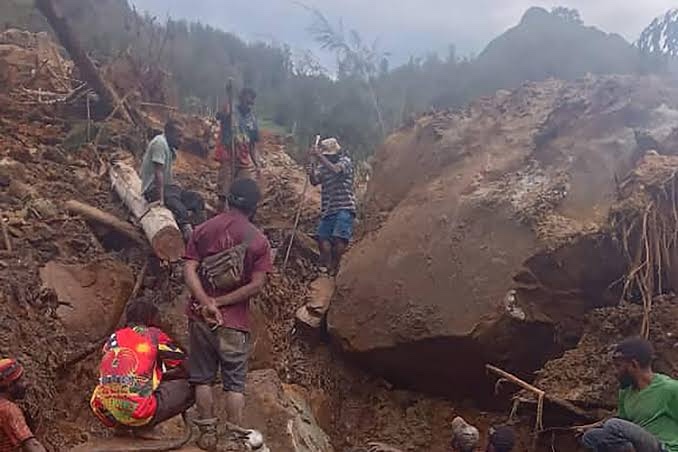UN warns of disease risk after Papua New Guinea landslide

Survivors of a deadly Papua New Guinea landslide face a “significant risk of disease outbreak” and are yet to receive sufficient food and clean water supplies, a United Nations agency said Thursday.
Six days after a mountainside community was buried in a sea of soil, boulders and debris, the United Nations’ migration agency said water sources had become tainted and the risk of disease was soaring.
Much of the area’s water flows through the landslide site — now a 600 metre-long (1,970 feet) graveyard.
“The creeks now flowing from the debris are contaminated, posing a significant risk of disease outbreak” the UN’s migration agency told partners in a rapid assessment report.
“There are no methods being used to treat the water to make it safe for drinking,” it said, warning of diarrhoea and malaria.
For much of the past week, residents of Yambeli and Lapak wards have been digging through countless tonnes of earth in the search for buried relatives.
Eyewitnesses reported the stench of dead bodies had become overwhelming.
Local officials said between six and 11 bodies had been recovered.
Getting clean water, purification tablets and “lifesaving food supplies” to the site were listed as top priorities by the UN’s International Organization for Migration (IOM).
The landslide also severed the main road to and from the community and the link has yet to be cleared.
The confirmed death toll is expected to rise significantly once heavy machinery arrives and works though the disaster zone which measures 90,000 square metres (968,751 square feet).
Enga provincial administrator Sandis Tsaka said it has not been possible to get such machinery, engineers or technical offers to the site yet “because of the risk of unstable land movement”.













